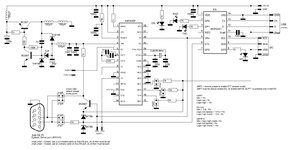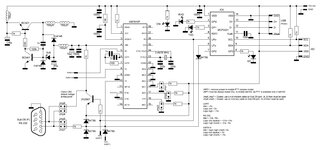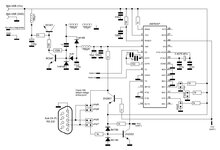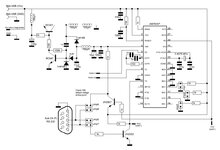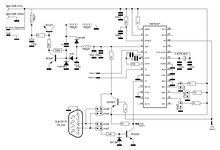neazoi
Advanced Member level 6
FvM, you mean it inverts in software the data sent from pin 18 of the microcontroller (post#1), which then drives the RxD pin in the D-sub9 connector, right?The AVR circuit in post #1 is apparently inverting RxD in software, it uses pin 18 instead of dedicated UART pin 14. At least AM7910 would need an external inversion, the modem chip has no option to provide it.
So it is the signal in the base of T2 that has to be inverted in that microcontroller schematic.
Last edited:
